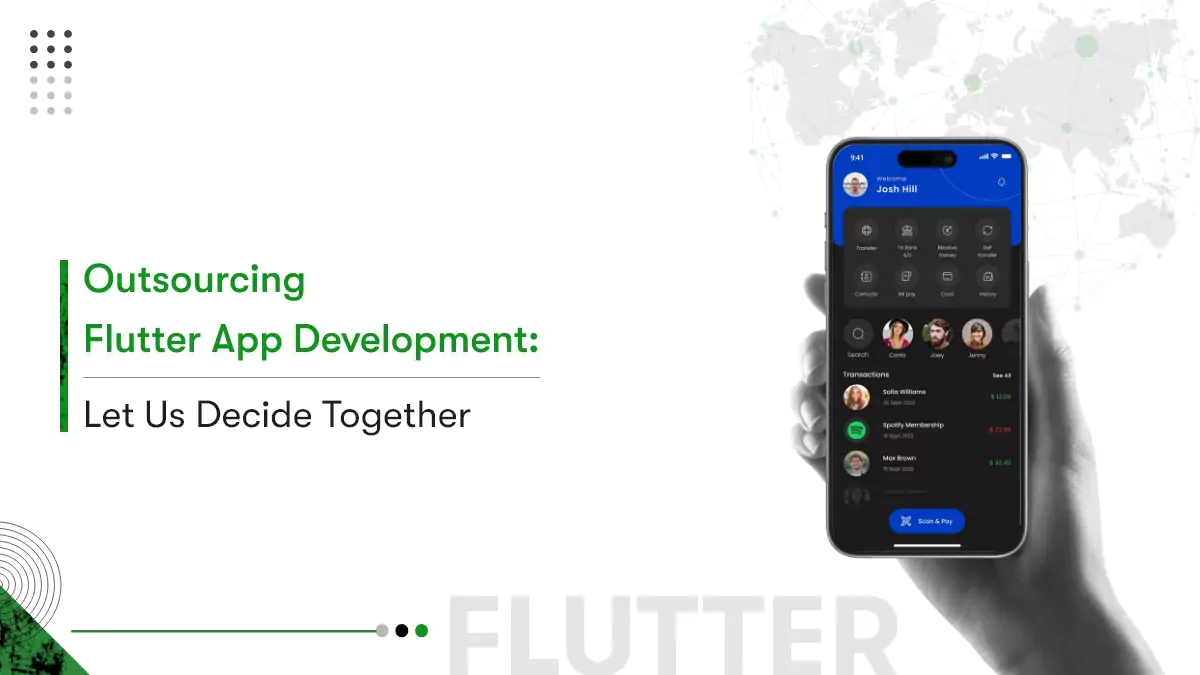In the digital world, the business mobile app plays an important role in getting success in any business. An application provides a wider online platform to run your business and cut corners for business to be on top in a competitive environment. However, in 2022, it is going to be hard to promote and expand your business without building a powerful mobile app from scratch.
Yes, it’s time to get a little serious about how you are going to compete with people who already have an app for their businesses. How to create an app from scratch that will keep you in the game for a long time? So, let’s have a look at the factors below and learn how to make an app by following the steps sequentially.
1. Define Your App’s Objectives – Identify the Need
When you are starting to figure out the process of app development, then the first responsibility is to identify the object of the app, followed by Lean Canvassing. Without an object, it is impossible to draft any plan. Moreover, you couldn’t reach the target of the app without an object. Make sure that your app should aim and satisfy the two goals of the app.
The first is the potential customer base, and another is your personal business target. Therefore, focus on the interests of your audience and check whether they interact with your business or not. If you don’t see any benefit immediately, then try a depth-research.
You need to focus on the basic improvement factors that are important for a business. Ensure that your created app is able to create better productivity by reducing expenses. After meeting those fundamental requirements, ensure that your app is effective for multiple purposes. At last, evaluate the market competitors, whether your key areas are inclined to the current market.

2. Layout your App Features, Functionality, and Traits
In the above stage, I hope you already get an idea of what you want to achieve with your app. Now, it is the perfect time to define the actual scope of your mobile application. List out creative app features and functionalities essential and advanced. You can prepare a Product Requirement Specification and include every requirement in it.
So you can easily accomplish the solutions, and it makes an outline in the previous step. Those traits include e-commerce integrations, push notifications, and options to share them on social media.
After evaluating the app, enlist any features that will bring value to your built app. In the mobile app, you can also include some of the extra features like the booking tab, events, calendars, etc. The most valuable feature is a review, or feedback, by that customers can add their review on your services.
3. Research your App Competitors in the market
After checking your app’s scope, the next step is to analyze successful competitors. You should remember that your app should be unique and effective as much as possible. So, examine your competitors’ moves and create your strategies to achieve the goals.
This competition is not limited to a local area if you see, there are many similar business apps and competitors around the world. Keep in mind, you can do a useful survey on potential customers. It helps to spark new ideas and find out the existing gaps between your business and the market. This could be beneficial to make a mobile app more efficient.
Review the app design along with their functionalities and compare them with the competitors’ apps. It is helpful to optimize the newly created mobile app easily.

4. Wireframe your App and Build your App Use Cases
When you define the objectives of your app and its functionalities, it might be inclined to the market and insight of the competitors. With wireframing, you need to create the first skeleton of your app and gather all the individual blocks.
By using the wireframing techniques, you can merge the raw thoughts and a final product simultaneously. It represents the app layout and the data flow without visual distractions. With this process, you can easily design multiple layouts in order to screen flows.
In this section, it is required to pick a powerful template and start sketching. In each template, you can use each of the frames for specific purposes. Hence, you can achieve your aim easily by selecting the frame adequately to build an application for your business.
5. Test Your App Wireframes
When you are developing an iOS app, then you need to check the visual representation. After going through a perfect checking algorithm, it is the right time to test the flows of your built app. Draw an accurate use case diagram and identify the friction points. Thus, you can decrease the gap between your expectations and the requirements of the audience.
To examine the app wireframes, you need to use a powerful tool. It is an ideal way to make the wireframe interactive. With this useful programming tool, you can easily connect screens and links actively. Thus, you can idealize the actual experience of your application. It is essential to add new images of individual screens.
You can share the exact similar prototype in different positions of the separate screens. Thus, you can reduce the data redundancy with a shed of effective wireframes. In this section, you have to check the feedback regularly. It helps you to know the user experiences to make your app’s objective feasible. Once, you finalize your wireframe, it is time to move to the prototype. Prototype development is similar to wireframe but developed with more accuracy and detail. You have to include every single visual element into your prototype to have the look and feel almost similar to the final product.

6. Select an Appropriate App Development Platform
When the app’s use cases and functionalities are mapped out properly, then it is an appropriate time to start the development of the app. Therefore, choose a programming language to code your app, and the technology stack selection is entirely dependent on your budget. If you are fresher on this platform, then your budget would be limited. Make sure that your app gives high performance at cost-effective development.
If you want to develop a native app, then it is essential to build an app from scratch. In the case of a mobile app, the path allows you to choose a hybrid platform. Hybrid is an effective way for both Android Development and iOS development. To develop a Native or Hybrid app, it is essential to hire Mobile App Developers.

7. Build your App’s Landing Page
Sometimes, it is quite difficult to develop an app exactly for the marketing platform. In such a situation, developing and launching a landing page plays a crucial role before launching an ultimate app. As an app developer, you might include an appropriate headline at the top of the page and then add a brief summary. At the bottom of the page, you can put any call to action (CTA) for users.
8. Develop your Mobile App
If you perform groundwork for your project, then it becomes easier to build an app. Build an iOS app with XCode that is helpful to manage the project, and Swift is used as an intuitive programming language. On the other hand, for an Android app, you must go with Kotlin and Android Studio.
Front-end includes frame, navigation, graphics, and data processing. Creating a mobile application, you need to the back-end of your app where networking, data storage, user management, etc.
9. Revise your App according to your Users Feedback
After gathering all the feedback, you need to arrange them by their similarities. If the user chooses the same options, group them, and keep the questionable feedback in a separate group. After sorting out the feedback accordingly, revise your tasks. Upgrade them to make your own wireframe and test all of them to remove the conflict points. Once the test is finished, then you need to move to the next step.

10. Test your Live App
Once development is completed and modified according to the users’ feedback, then it will go under the testing process. Quality testing is an important step in a mobile app development process. This step removes bugs and mistakes by quality analysis & testing process. By external testing, you can check whether the app users are familiar with that app or not. You can use some effective app testing tools and run the app in a realistic environment.
11. Launch your Application
It is the final step, roll out your developed & tested application to your preferred app stores. Make sure that you follow all the guidelines that are useful to launch the app. After testing the mobile app, you can promote your mobile app in front of the right people. It needs to be done at the right time and collect the users’ feedback respectively. After deploying the app on stores, update the app frequently with the new features, and promote on social media.
What to do after app development and launch?
Promote and market the app
You can promote your app from the development stages to create a buzz about the launch. Once you launch the app, you can opt for the below common ways to promote your app to your audience:
- Use a banner to your website,
- Publish a dedicated blog post about the app,
- Send emails to your existing customers,
- Promote it on social media, such as Facebook, Twitter with creating and posting interactive videos, photos,
- Create introductory videos to share on YouTube.
Early adopters feedback
Launching your app is the first step towards growth, but you need to listen to your early adopters if you want to keep stepping up. These are users that use your app right after the launch. Therefore, their opinion, review, and ratings always help you figure out improvement areas in the app. Besides, it’s crucial to ask every user about their experience via app or social media to spread word of mouth.
Maintenance
You can divide app maintenance into three primary categories: new feature updates, bug fixing, and major software updates. More often than not, users suggest features they would like to see in your app and errors they face in the review.
So, from the feedback section, you get an idea about features and bugs. On the contrary, whenever operating systems receive new updates, your app will have to keep up with the latest updates. It’s also a kind of app maintenance.
Final Words
When it is required to complete the task manually, it takes lots of time. Therefore, you should perform it with peace of mind and by applying your technical knowledge. If you have the proper skills and experience to develop an app, then any development process is not a hectic task for you. However, you have any doubt on how to make an app from the scratch, then consult with professionals of App Development Services providers.











 Contact Information
Contact Information